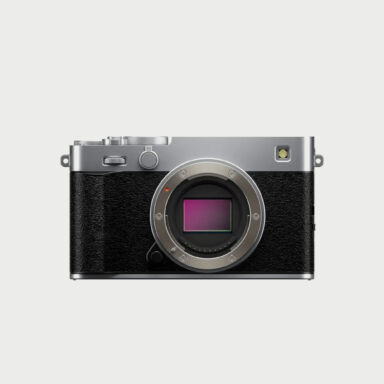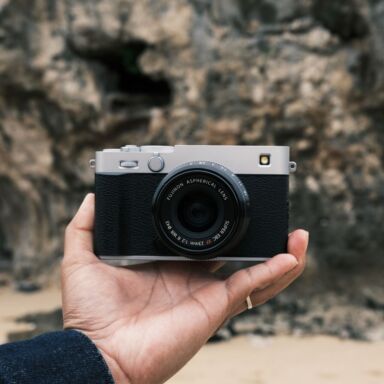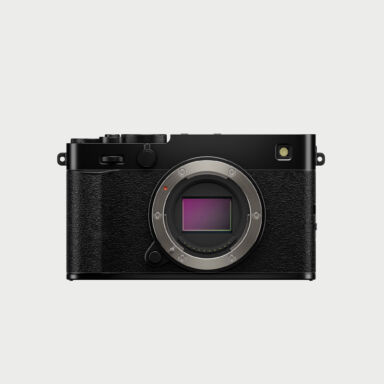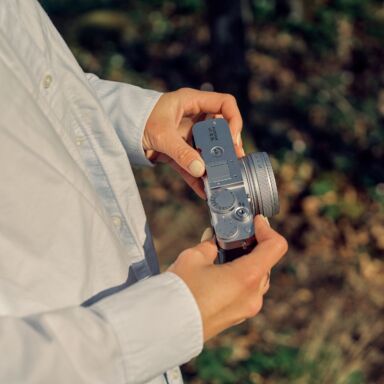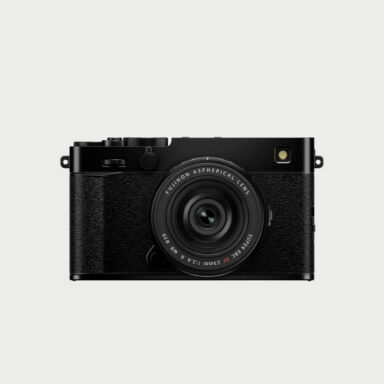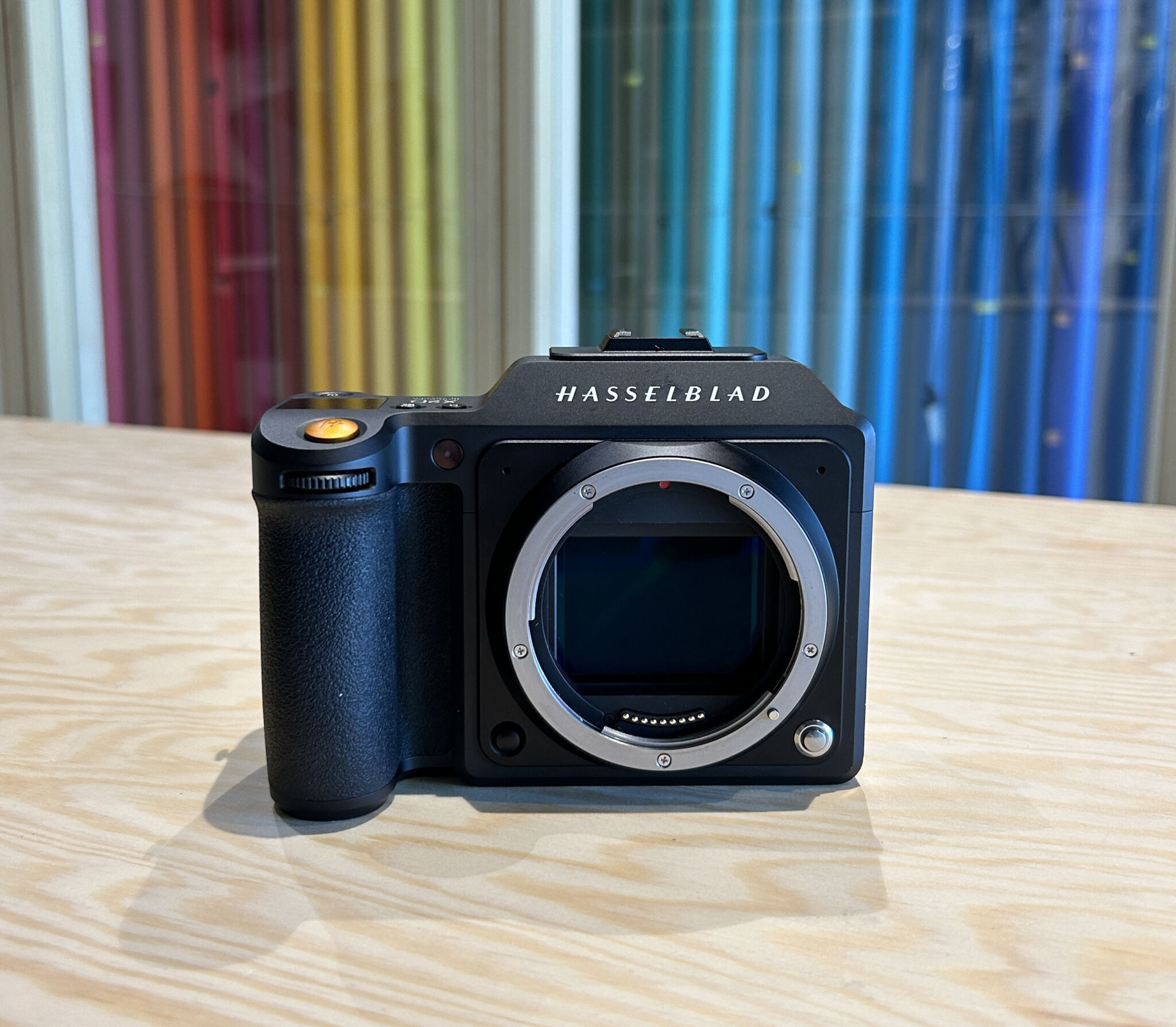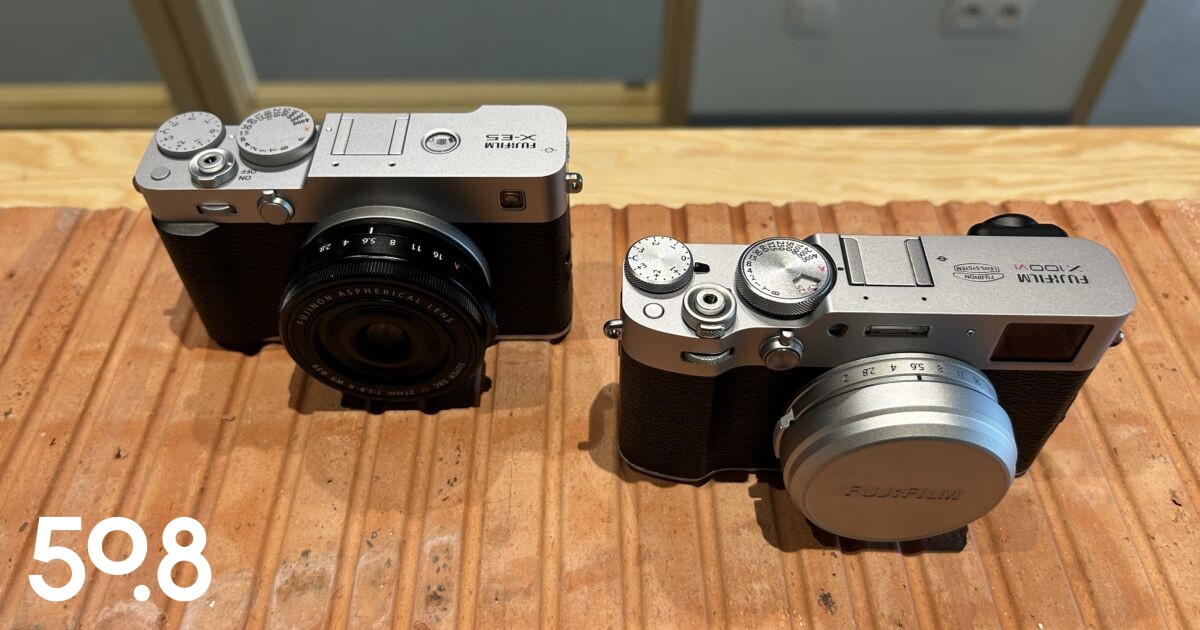Are you looking for pockets to store your photo equipment, batteries, cables, SD cards and other accessories? Discover the photo accessory pouches from Manfrotto (Pro Light Tech Organizer), Lowepro (Hardside CS or Gear Up Case) or CRDBAG.
The Fujifilm X-E5 was unveiled at X-Summit Shanghai. The latest model to join Fujifilm’s X-series, this compact, lightweight APS-C hybrid camera with interchangeable lenses retains the classic aesthetics of the range, while incorporating enhanced performance.
Featuring a stabilized 40.2 MP APS-C sensor, the X-E5 is thehybrid equivalent of the compact X100VI, ideal for everyday photography, street photography and travel.
The X-E5 shares virtually the same design and internal features as the X100VI. The major difference is that the X-E5 is a hybrid with interchangeable lenses, while the X100VI features a fixed 23mm f/2 lens.
Discover our X-E5 VS X100VI comparison in this article, to better understand what’s new in the X-E5, what are the differences with the X100VI and help you choose between the two cameras.
Table of contents
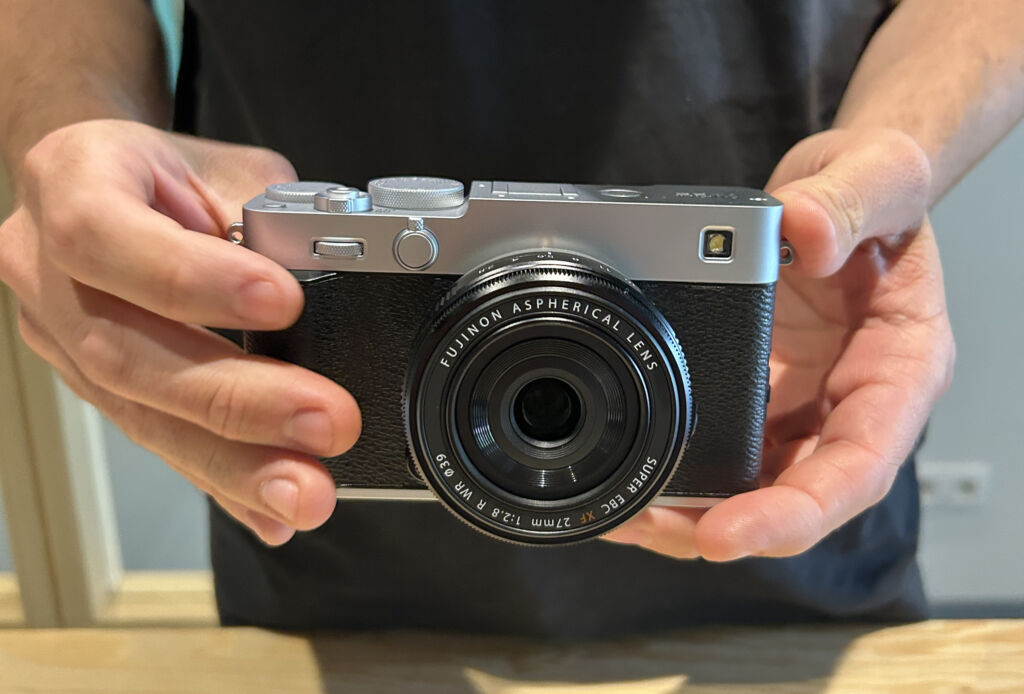
1. What are the similarities between the X-E5 and the X100VI?
The Fujifilm X-E5 and Fujifilm X100VI share similar technical features, offering similar image processing and capture capabilities.
Both feature a 40 MP APS-C sensor with no low-pass filter (anti-aliasing), which improves sharpness and detail, but can increase the risk of moiré in certain situations.
Both models feature sensor-integrated image stabilization, with the X-E5 slightly ahead of the pack, offering up to 7 stops of correction in the center. They also feature 2x digital cropping.
On the video side, both cameras record in 6K at 30 fps, but the function remains secondary and not very accessible, confirming their predominantly photo orientation.
Both cameras feature the X-Processor 5 processor, with advanced autofocus modes. On the X-E5, autofocus benefits from a new feature that allows you to change not only the size, but also the shape of the AF area, from square to rectangle. Both offer highly precise spot autofocus.
2. The X-E5: X100VI with interchangeable lens?
As mentioned above, the two bodies are very similar in size and features, the major difference being that the X-E5 is a hybrid with interchangeable lenses, while the X100VI has a fixed 23mm f/2 lens.
The X-E5, with its interchangeable lens system (X-mount), offers greater optical versatility.
However, the absence of a focal plane shutter on the X100VI allows its lens to be closer to the sensor, facilitating a brighter aperture of around one stop, despite similar external dimensions.
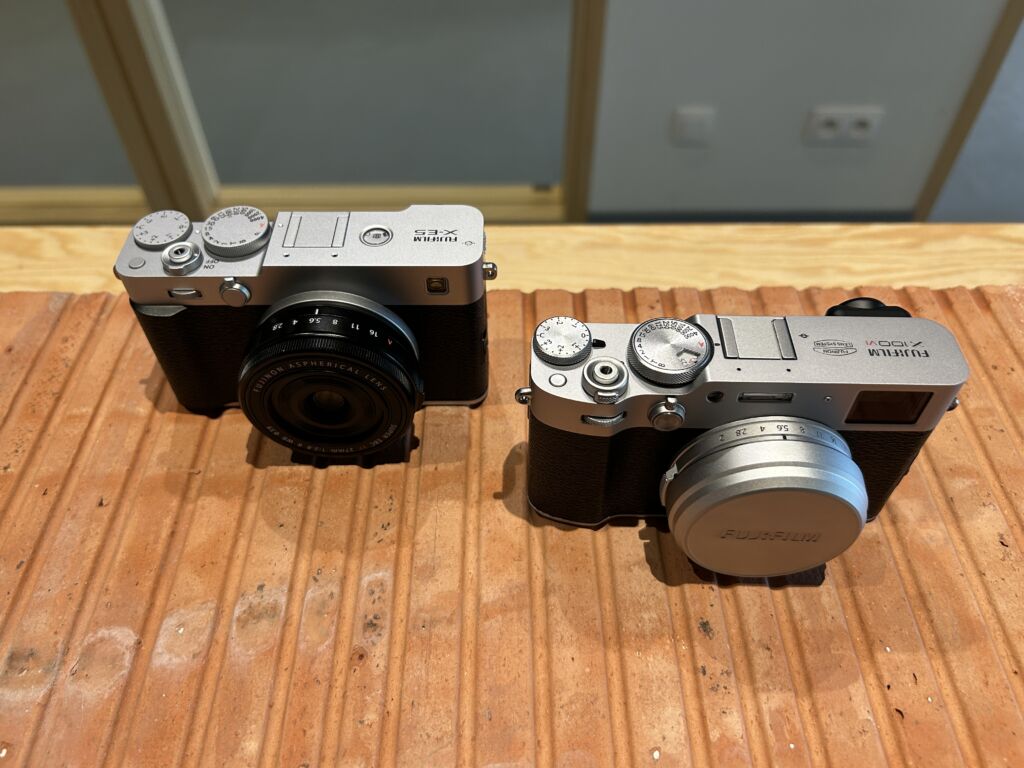
Film simulation dial
The Fujifilm X-E5 introduces a new dial dedicated to film simulations, with a circular display on the top of the body indicating the selected simulation.
This wheel offers a simplified choice of six main simulations, plus three customizable slots (FS positions) where you can save specific settings: grain, highlight and shadow management, clarity, noise reduction, and Color Chrome (red and blue) effects.
These settings remain associated with each custom position and are not overwritten when you change simulations.
Unlike the X100VI, which offers all 20 simulations accessible only via menus, the X-E5 facilitates rapid selection and customization, with an immediate preview on the LCD screen.
This new feature makes it easy to create film “recipes” adapted to different shooting styles or conditions.
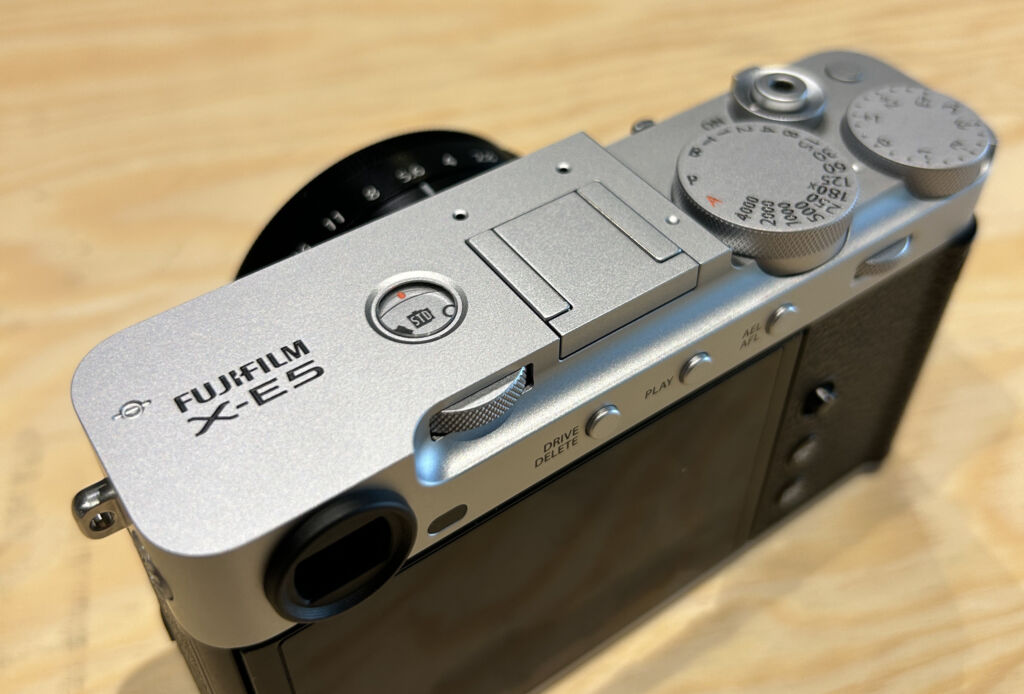
Image stabilization
Fujifilm highlights the X-E5 ‘s stabilization as one of the camera’s strong points. As on the X-T50, stabilization offers up to 7 stops of correction at the center and 6 stops at the periphery, thanks to an improved gyroscope and algorithm to detect rolling movements more accurately.
The X100VI, meanwhile, offers up to 6-stop stabilization, sufficient to ensure sharp images and stable video, even in low-light conditions.
Autofocus and burst
The X-E5 incorporates Fujifilm’s latest autofocus algorithms, similar to those of the X100VI and X-T50. It offers responsive autofocus, capable of detecting and tracking a variety of subjects: humans, animals, vehicles, aircraft, insects or drones.
In terms of burst, the camera achieves13 fps with electronic shutter and 8 fps with mechanical shutter, performances close to those of the X-T5.
The rate can be increased to 20 fps with 1.29x cropping (24.2 MP). Buffer memory is limited: 18 uncompressed RAW and 163 JPEG.
The X-E5 also features a pre-trigger mode, capturing a one-second burst before the shutter is released, useful if you don’t want to miss a fleeting moment.
Viewfinder
The Fujifilm X-E5 features a 0.39-inch OLED electronic viewfinder with a resolution of around 2.36 million dots, identical to that of the X-E4.
By comparison, the X100VI offers a larger 0.5-inch viewfinder with 3.69 million dots, and above all a hybrid viewfinder combining an electronic and optical display, true to the retro rangefinder spirit of the X100 range.
While the X100VI ‘s electronic viewfinder is similar to that of the X-E5, the presence of the optical viewfinder is exclusive to the X100VI, much appreciated by users, and absent from the X-E5.
The X100VI features a front-mounted lever for switching between electronic and optical viewfinder displays. The X-E5 also has a front switch, but dedicated to a different function: a digital cropping and image format selector, like the GFX100RF.
This selector activates the “Surround View” function, which offers several options for displaying the out-of-frame area, border, grayed-out or enlarged, to better visualize the composition.
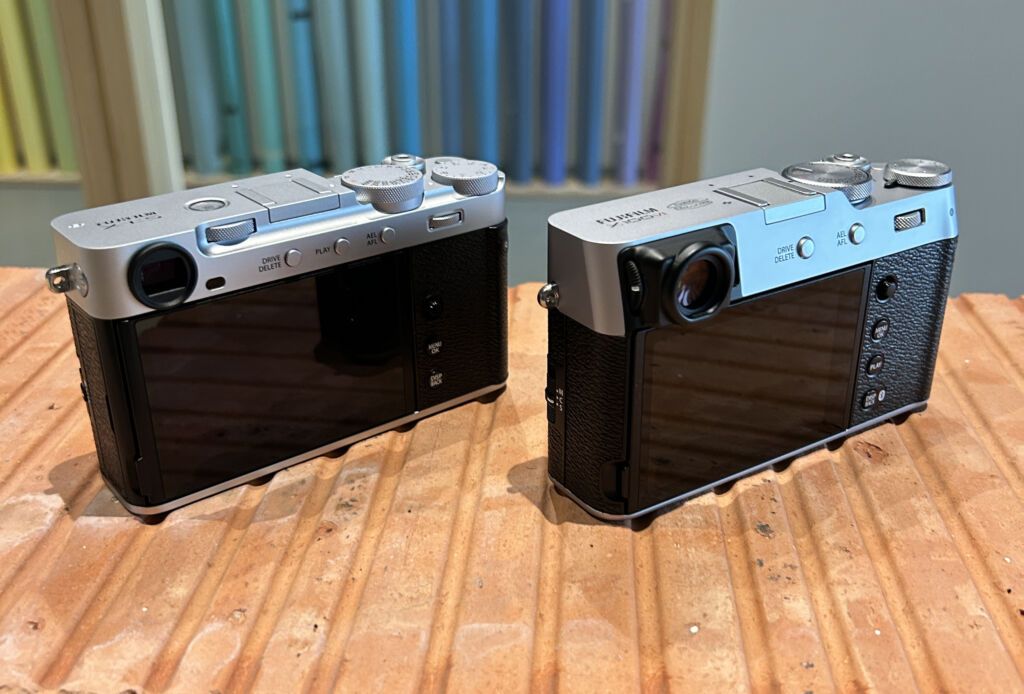
“Classic Display” mode
The X-E5 features a retro display mode in the viewfinder called “Classic Display“. It displays only the exposure mode, exposure settings and battery indicator in red, simulating a vintage LED display. Image preview retains the effect of exposure compensation and film simulations.
In this mode, the exposure compensation scale on the left is replaced by a pointer indicator on the right. Although it is difficult to read precisely outside the central position, it harmonizes with the overall aesthetics of the body.
Design and handling
The Fujifilm X-E5 is a compact body (125 x 73 x 39 mm, 445 g) with a neat design and machined aluminum top plate. The X100VI is a little more massive (128 x 75 x 55 mm, 521 g).
The X-E5 offers improved ergonomics over the X-E4, with two pressable click wheels, a side-mounted AF selector and a front-mounted multifunction button, customizable by pressing or pulling.
Its touchscreen can be rotated up to 180°, offering greater flexibility than that of the X100VI (approx. 100°), but with lower resolution (1.04 Mpts vs. 1.84 Mpts).
The X100VI boasts a built-in LED flash, which is useful in low-light situations and is absent from the X-E5. Both models feature a hot shoe compatible with external flashes.
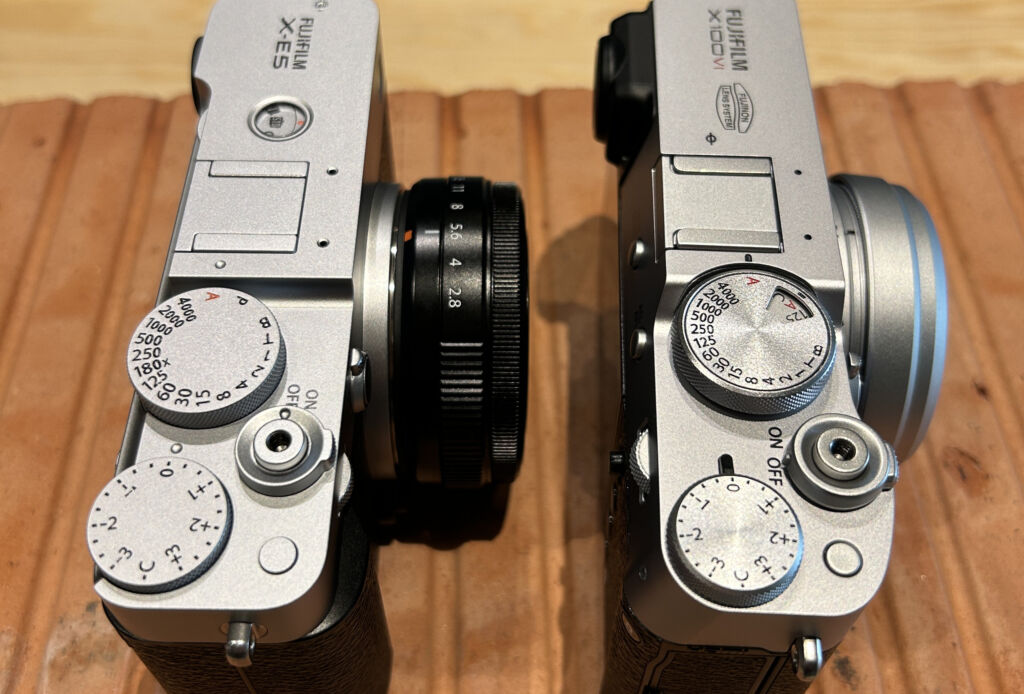
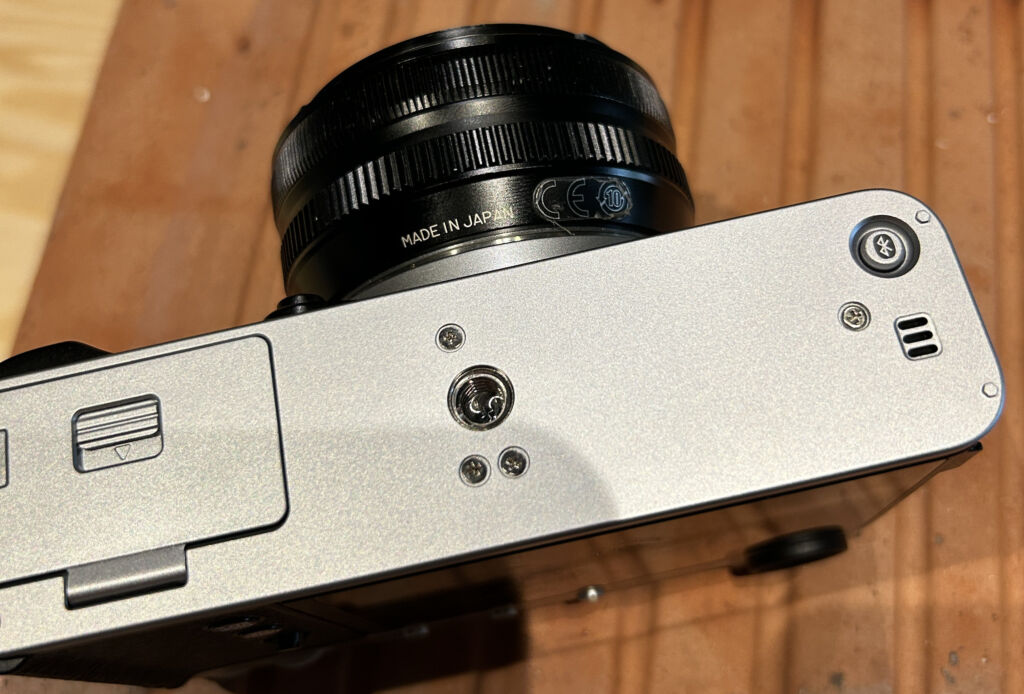
Connectivity and storage
The Fujifilm X-E5 is equipped with an HDMI Type D port, a 10 Gbps USB Type-C port that also enables recharging via USB, and a micro 2.5 mm port for wired remote control.
The box also incorporates 5 GHz WiFi and Bluetooth 4.2, facilitating file transfer and remote control via the XApp mobile application.
A Bluetooth button is discreetly positioned under the left-hand corner of the device for quick pairing.
On the storage side, the X-E5 boasts a slot for UHS-II SD cards, offering faster transfer speeds, unlike the X100VI, which is limited to UHS-I cards.
4. Technical specifications: X-E5 VS X100VI
| Specs | Fujifilm X-E5 | Fujifilm X100VI |
| Sensor | X-Trans CMOS 5 HR | X-Trans CMOS 5 HR |
| Lens | Fujifilm X mount | XF 23mm F/2 |
| Low-pass filter | No | No |
| Processor | X-Processor 5 | X-Processor 5 |
| Electronic viewfinder | 2.36 Mpts OLED, 0.66x | 3.69 Mpts OLED, 0.52x |
| LCD screen | 3-inch, 1.04 Mpts, tilting | 3-inch, 1.62 Mpts, tilting |
| Autofocus | Intelligent hybrid autofocus (TTL contrast-detection AF / TTL phase-detection AF) | Intelligent hybrid autofocus (TTL contrast-detect AF / TTL phase-detect AF) |
| Sensitivity | ISO 125 to 12,800 (extendable from ISO 64 to 51,200) | 125 to 12800 (extended to 64 to 51200) |
| Shutter | Mechanical and electronic | Mechanical and electronic |
| Continuous shooting | Up to 20 fps | Up to 11 fps |
| IBIS | Up to 7 stops | Up to 6 stops |
| Film simulations | 20 film simulations | 20 film simulations |
| Video | 6K at 30 fps | 6K at 30 fps |
| Built-in ND filter | No | 4.0-stops |
5. Fujifilm X-E5 price and availability
The Fujifilm X-E5 is available for pre-order now from 50.8 Shop at a price of 1549€. First deliveries are scheduled for August.
The Fujifilm X-E5 is also available as a kit with the new XF 23mm F/2.8 lens at a price of 1799€. For kits, delivery times are a little longer, with availability announced for December.
6. X-E5 vs X100VI: Which one to choose?
If you already own X-mount lenses, or if the idea of being able to change lenses appeals to you, the choice is clear: the X-E5.
Its sleek design, simplified access to film simulations, high-performance stabilization up to 7 stops, and digital cropping and aspect ratio options offer a smoother overall experience.
However, it should be borne in mind that the X-E5 sacrifices some of the features present on the X100VI, such as a higher-quality hybrid optical/electronic electronic viewfinder, reinforced waterproofing, and an integrated four-stop ND filter.
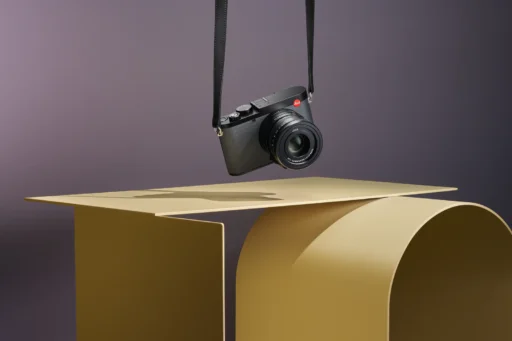






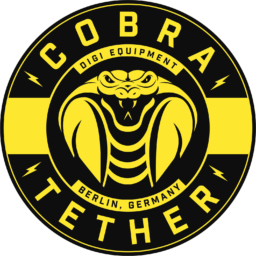






















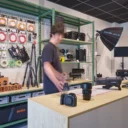
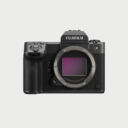 Photo
Photo 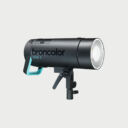 Lighting
Lighting 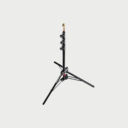 Tripods & Grip
Tripods & Grip  Digital
Digital  Bags & Cases
Bags & Cases  Printing
Printing 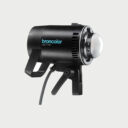 Continous lights
Continous lights 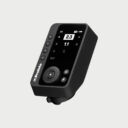 Transmitters
Transmitters 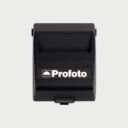 Accessories & Parts
Accessories & Parts  Accessories tripods & grips
Accessories tripods & grips 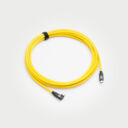 Cables & Tether
Cables & Tether 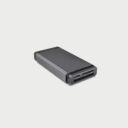 Hub & Adaptaters
Hub & Adaptaters 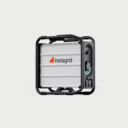 Portable power stations
Portable power stations  Sling bags
Sling bags  Travel bag
Travel bag  Rolling bags
Rolling bags 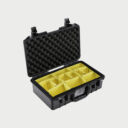 Hard cases
Hard cases 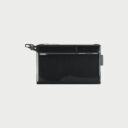 Organizers & Pouches
Organizers & Pouches 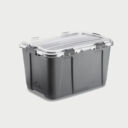 Containers
Containers 